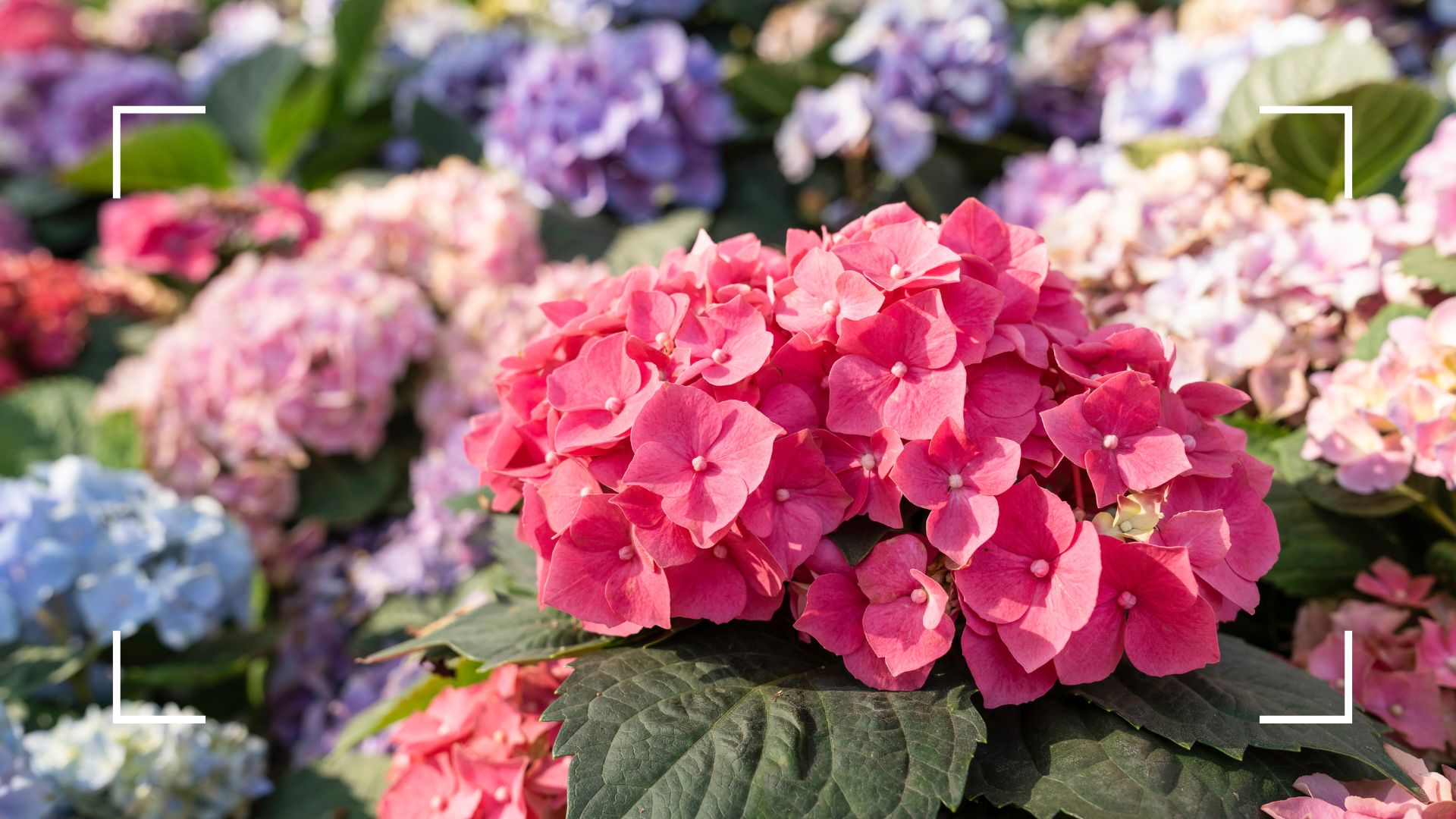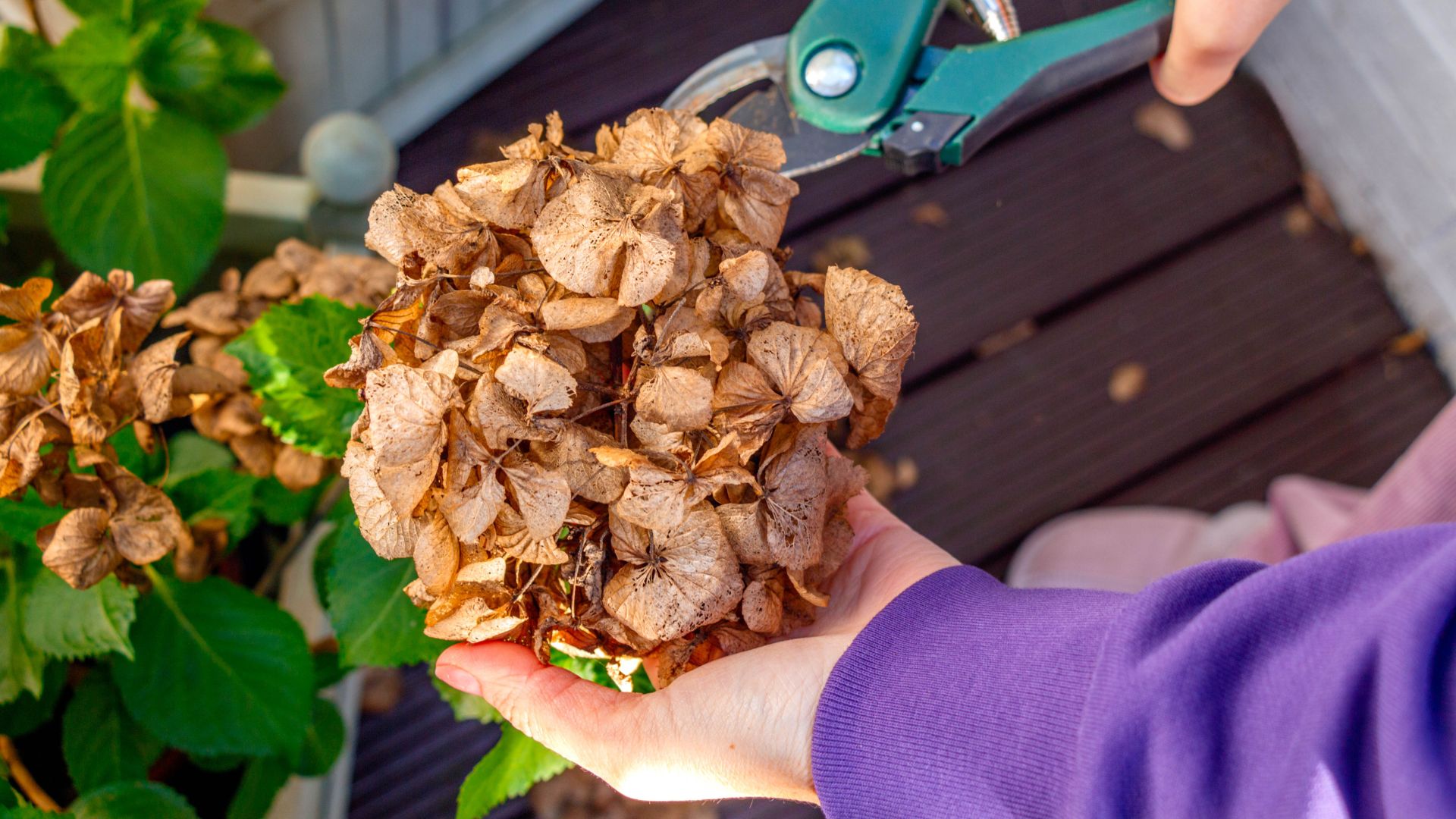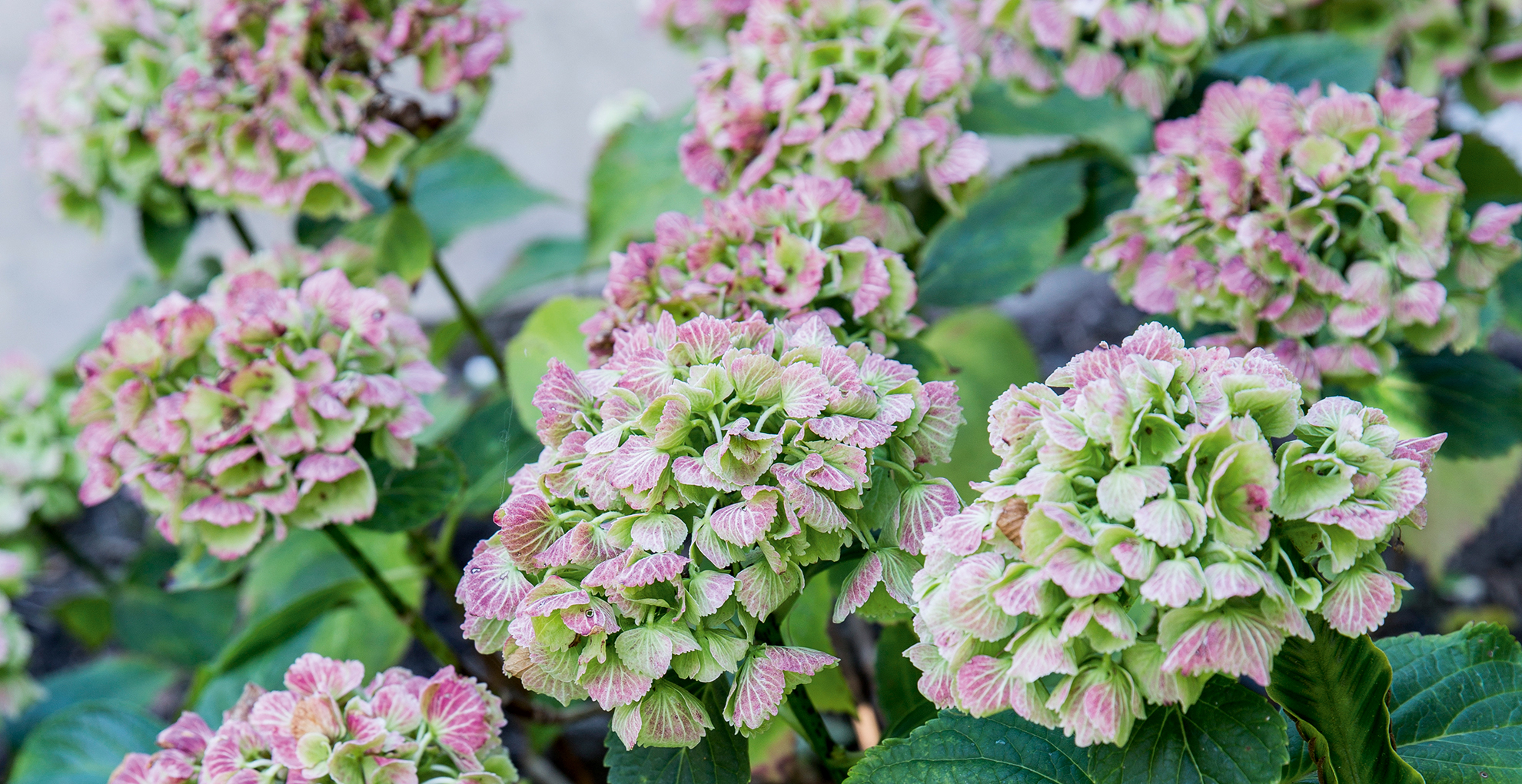
When it comes to keeping your garden looking its best, deadheading can be one of the most effective ways to improve the aesthetic. It also offers growth benefits for many plants, but do hydrangeas fall under that umbrella?
Knowing how to deadhead your plants properly is a key part of maintaining your garden and it's an easy gardening tip that every gardener should know. Whilst deadheading has various benefits, some plants don't actually need it and can drop their spent flowers by themselves.
So if you're looking at your hydrangea bush and thinking it's seen better days, then you're in luck as the experts say deadheading is the way to go.
Should you deadhead hydrangeas?
While watering your garden plants is an absolute necessity, deadheading is only required for certain species – but it can make a huge difference to the longevity of the flowers.
"Whether you need to deadhead hydrangeas will depend on the type of hydrangea that you are growing, but it is not an essential task and will not damage your plant if you do not do it," explains Graham Smith MCIhort, a plant expert from LBS Horticulture.
He says that Mophead hydrangeas can be deadheaded but it is recommended that you leave the flowerheads in place on the plant as they can provide frost protection for the buds that will become next year's flowers.
"You can remove the dead flowers in springtime, as the new buds should not need to be protected from frost as much by then," says Graham.
"If you are growing lacecap hydrangeas, these are hardier than mopheads and can be deadheaded as soon as the flowers die off. They should be deadheaded no later than early August, as this will help them to divert their energy from seed production," finishes Graham.
What are the benefits of deadheading hydrangeas?

Similar to why you should deadhead peonies, there are several possible benefits for your hydrangeas should they be the right type.
Petar Ivanov, gardening expert at Fantastic Gardeners, says, "Removing faded flowers can improve the overall look of the plant and keep your garden's appearance tidy. And for hydrangeas species that bloom on new wood, deadheading can stimulate the production of new flower buds, leading to more blooms in the current growing season."
Petar also warns that hydrangeas can self-seed and become a common invasive plant if they're left unattended. Deadheading them can stop this unwelcome spread, although if you're into the rewilding trend you might be more than happy to let the plant self-seed.
FAQs
How to deadhead hydrangeas
The method of deadheading is very similar to how you'd prune a rose bush or deadhead tulips, you'll just need the right tools to help you along.
"You should firstly ensure that you are using a clean, sharp pair of secateurs to deadhead plants, as this will prevent the spread of disease. Identify the flowerhead that you are going to remove, and travel down the stem, away from the flower, until you reach the next pair of leaves," says Graham.
Then cut directly above this pair of leaves, ensuring that there's as little stem as possible left above it. He says you need to repeat this process for any other flowerheads that you want to remove until the whole bush is done.

To keep your garden looking neat and tidy, Petar suggests collecting the removed flower heads and disposing of them properly by either creating your own compost or disposing of them as green waste.
If you want to give your hydrangeas a little extra love then Petar also recommends watering the hydrangea and adding a layer of mulch around the plant so it can retain that moisture whilst suppressing weed growth.







